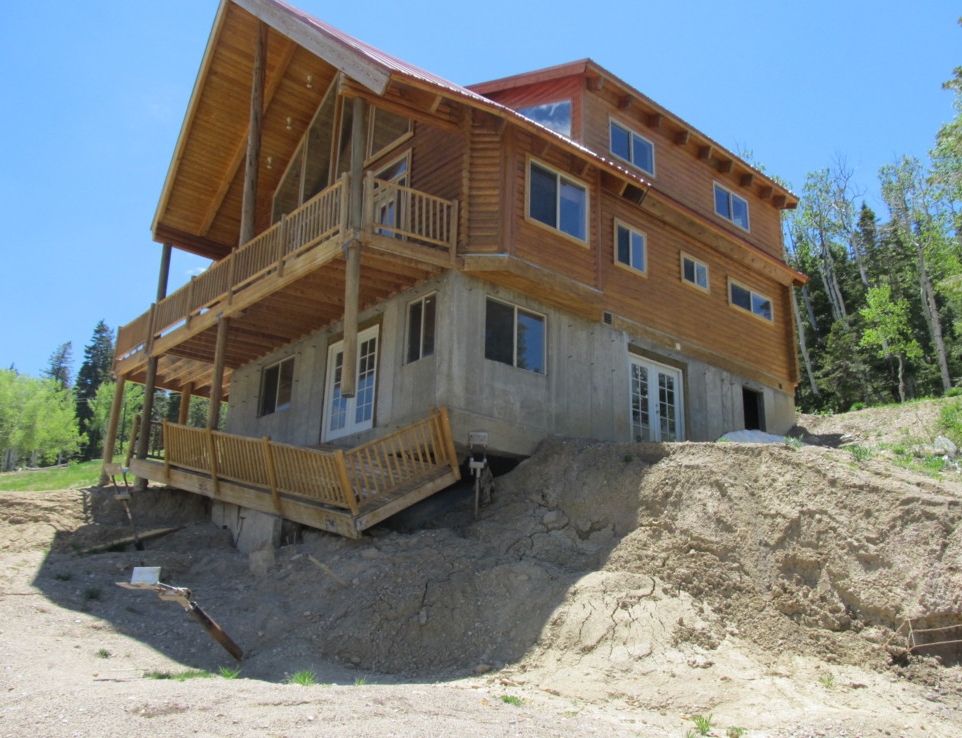A Guide for Homebuyers and Real Estate Agents
Geologic processes damage homes in Utah every year. Whether you are buying or selling a home, selecting a building site, or assessing existing property, it is important to consider the geologic risk factors that may affect your property and surrounding areas. An initial engineering-geology investigation could help property owners avoid costly damages or risk to life safety should a geologic hazard event occur. Hazard awareness also offers homeowners the opportunity to protect property through insurance, retrofitting, and other risk-reduction measures. Losses due to geologic hazards are not covered by typical homeowner’s insurance policies.
There are several ways to investigate hazard potential through various hazard-related resources. Geologic hazard maps are useful for indicating potential geologic hazards that could exist for a neighborhood or subdivision-sized land parcel. Both statewide and county hazard potential maps are available for various types of hazards that affect Utah. Local municipalities may also be able to provide geotechnical reports and may have adopted geologic hazard ordinances.
Considerations for Geologic Hazards and Real Estate
- Do not assume that local government approval of a subdivision or building permit guarantees safety from geologic hazards. Utah state law does not require realtors to verify or disclose geologic hazards.
- Losses due to geologic hazards are not covered by typical homeowner’s insurance policies. For a summary of flood and earthquake insurance in Utah, visit the Utah Insurance Department.
- Check if the property is located in a federally designated special flood hazard area by going to the Federal Emergency Management Agency (FEMA) and obtaining a Flood Insurance Rate Map (FIRM) for your area. Flood insurance is recommended if you live in a floodplain and may be required by a lender if buying real estate in high-risk areas.
- If you have geologic hazard problems, contact the engineering, planning, or development services department of your city or county government. If the city or county cannot resolve the problem, contact a licensed and insured geotechnical consultant or consulting firm—search for “Engineers-Geological” and “Engineers-Geotechnical-Soils.” You can verify that any geologists, engineers, and/or contractors you use are licensed in the state of Utah here.
- You can significantly increase safety at home by following a few simple steps. For earthquake safety and preparedness information, go to Be Ready Utah. After a large earthquake, utilities and emergency services will likely be delayed. A household should be prepared for 72 to 96 hours of self-sufficiency after a major earthquake.
- Structural failure of homes is one of the most dangerous outcomes of an earthquake. Seismically retrofitted homes are significantly more resistant to earthquake-related damage. Utah State History (Historic Preservation) offers an introduction to seismic retrofitting in “Bracing for the Big One.” The Utah Guide for the Seismic Improvement of Unreinforced Masonry Dwellings 2015 shows different approaches to retrofitting different types of older homes.
Additional Resources
UGS publications and Survey Notes articles relating to real estate:
- What geologic hazards should I be aware of as a homeowner in Utah? (2016)
- Protecting Utah homes from geologic hazards (2005)
- Homebuyer’s guide to earthquake hazards in Utah (1996, pdf)
- Homeowner’s guide to recognizing and reducing landslide damage on their property
- I am thinking of buying a house at “X” address… is it near a fault? (2007)
Suggested Reading
General Hazards Information
Earthquakes, Hazards Safety, and Seismic Retrofitting
Putting down roots in earthquake country – your handbook for earthquakes in Utah
Salt Lake City Emergency Management
Utah Division of State History: Bracing for the Big One for seismic retrofitting of historic houses
The Utah Guide for the Seismic Improvement of Unreinforced Masonry Dwellings 2015 (pdf)
FEMA: Homebuilder’s Guide to Seismic Resistant Construction (pdf)
Salt Lake County: Minimum Standards for Surface Fault Rupture Hazards Study(pdf)
UGS: Using Geologic Hazard Information to Reduce Risks and Losses – A Guide for Local Governments (pdf)
University of Utah Seismograph Stations
Environmental Hazards





